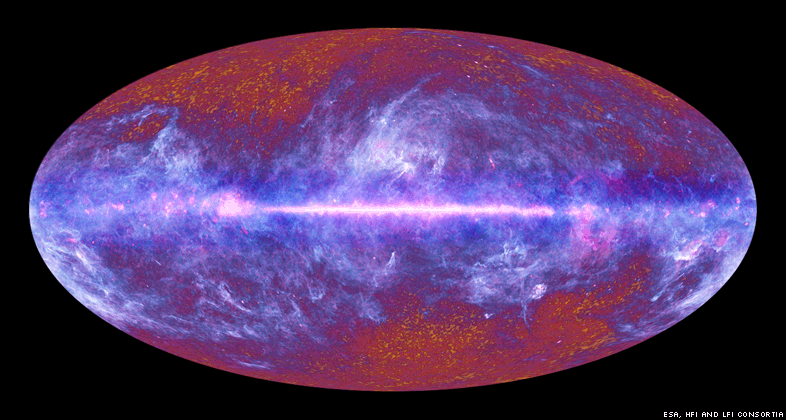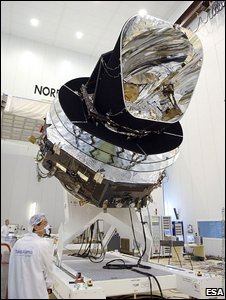Planck telescope reveals ancient cosmic light
July 6, 2010 | Source: BBC News
The first full-sky image from Europe’s Planck telescope has been released by the European Space Agency.
The telescope records only light at long wavelengths (microwaves to the very far infrared), so the image represents dust and gas.
Dominating the foreground are large segments of our Milky Way Galaxy (the bright horizontal line running the full length of the image is the galaxy’s main disc, the plane in which the Sun and the Earth also reside). Behind that is the primordial cosmic microwave background (CMB) radiation, a key target of the Planck mission. A formal release of fully prepared CMB images and scientific papers is expected by the end of 2012.
A major quest for Planck is to find firm evidence of inflation, the faster-than-light expansion that cosmologists believe the Universe experienced in its first, fleeting moments. Theory predicts this event ought to be imprinted in the CMB and its detail should be retrievable with sufficiently sensitive instruments.
Planck was launched in May 2009 and moved to an observing position more than a million km from Earth on its “night side.” It carries two instruments that observe the sky across nine frequency bands. The High Frequency Instrument (HFI) operates between 100 and 857 GH, and the Low Frequency Instrument (LFI) operates between 30 and 70 GHz.

